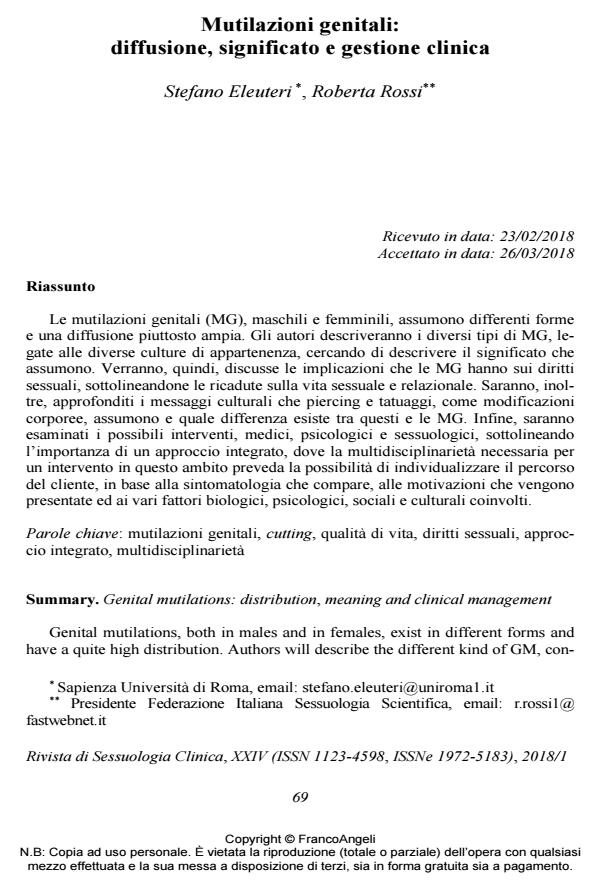Genital mutilations: distribution, meaning and clinical management
Journal title RIVISTA DI SESSUOLOGIA CLINICA
Author/s Stefano Eleuteri, Roberta Rossi
Publishing Year 2018 Issue 2018/1
Language Italian Pages 12 P. 69-80 File size 170 KB
DOI 10.3280/RSC2018-001004
DOI is like a bar code for intellectual property: to have more infomation
click here
Below, you can see the article first page
If you want to buy this article in PDF format, you can do it, following the instructions to buy download credits

FrancoAngeli is member of Publishers International Linking Association, Inc (PILA), a not-for-profit association which run the CrossRef service enabling links to and from online scholarly content.
Genital mutilations, both in males and in females, exist in different forms and have a quite high distribution. Authors will describe the different kind of GM, connected to the different culture, trying to describe the meaning they assume. The implication of GM on sexual rights will be discussed, underlying the outcomes on sexual and relationship quality of life. Cultural messages connected to piercing and tattoos will be analyzed, explaining the differences between body modifications and GM. Finally, possible medical, psychological and sexological interventions in this field will be examined, underlining the importance of an integrative approach, where the multidisciplinarity needed for an intervention in this area could consider the importance of individualizing the client pathway, based on the symptoms, the motivations and the biological, psychological, social and cultural factors involved.
Keywords: Genital mutilations, cutting, quality of life, sexual rights, integrative approach, multidisciplinarity
Stefano Eleuteri, Roberta Rossi, Mutilazioni genitali: diffusione, significato e gestione clinica in "RIVISTA DI SESSUOLOGIA CLINICA" 1/2018, pp 69-80, DOI: 10.3280/RSC2018-001004